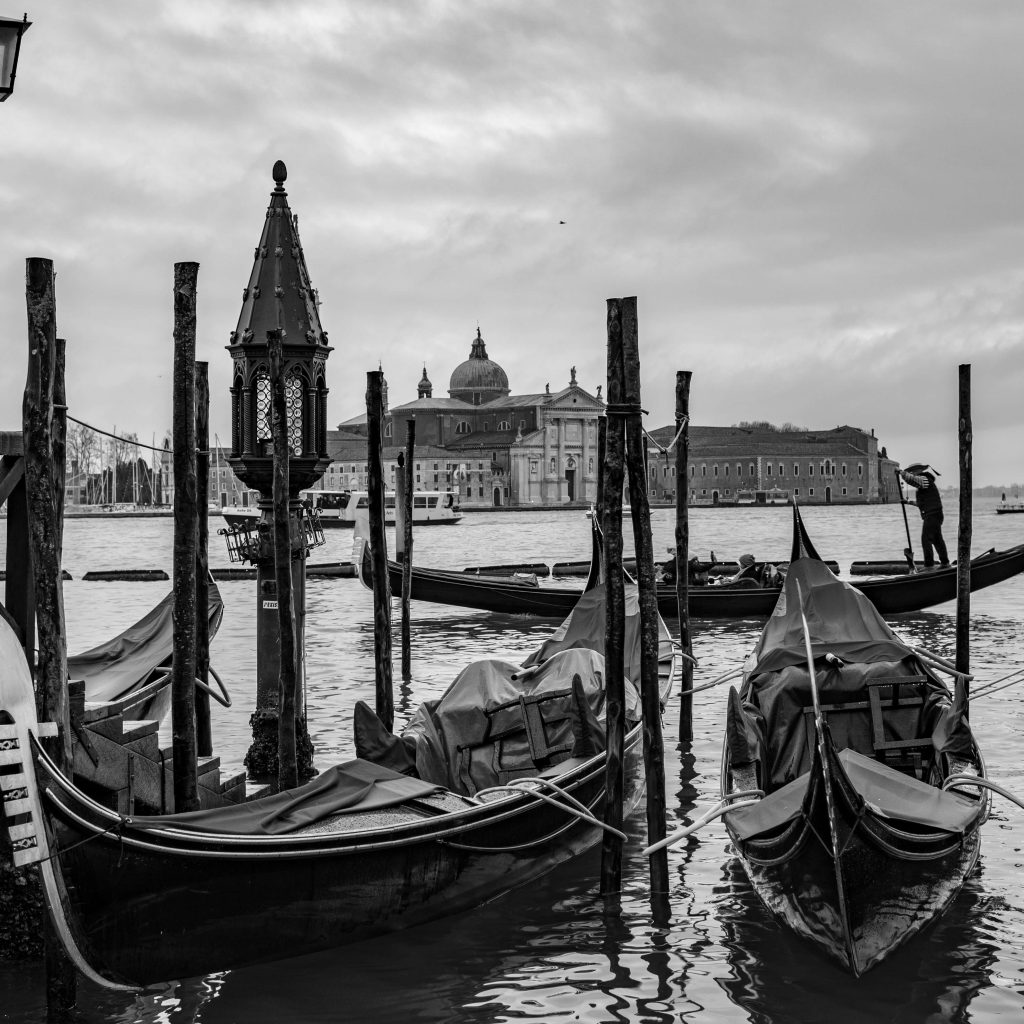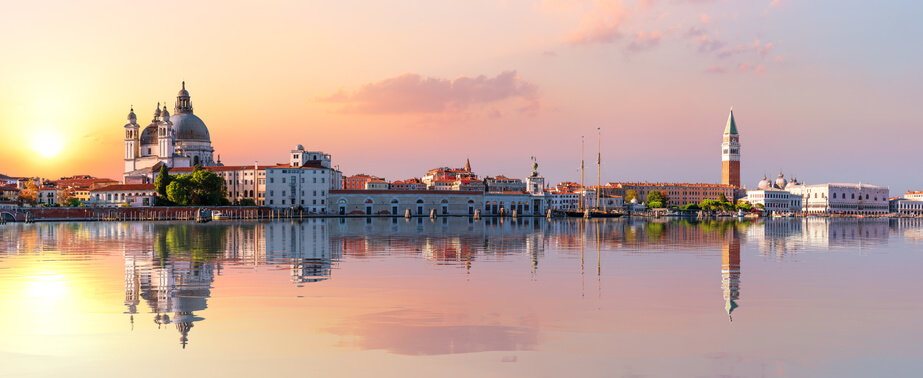Venice
Venice is not the largest city in Italy, but is certainly among the most visited. In 2021, it has approximately 280,000 permanent residents but the tourist visits can go as high as 20 million annually, this figure increases every year.
Venice History
A fascinating yet mysterious city that started way back 4 th century AD, refugees of the Roman Empire from Attila the Hun fled to the islands where they took refuge among the fishermen living there and built a village. Eventually, the Lombards invaded the mainland which led to more refugees that they had to create more spaces and stronger underwater foundation to accommodate everyone. They decided to drive wooden poles beneath the ground, the wood did not rot over the years, or even centuries, because they were underwater and the components of salt water added strength to the base. It is still astonishing to know that this city is still standing under heaps of century-old woods.The official foundation date of Venice has been set on March 25, 421 at noon. According to legends, this was the date when the first stone was laid of the San Giacomo di Rialto Churh. It was built by a carpenter, who in the midst of a major fire made a vow to San Giacomo. He escaped uninjured and honored the vow by erecting this church in the saint’s name. Even though it is considered to be the oldest church in Venice, the current church was only consecrated in 1177. Other sources refer to April 25, 421 which is the Festa di San Marco, the patron saint of the city.

Top Attractions
- Grand Canal
- Also known as Canalazzo, is the most important waterway sweeping through this amazing city, approximately 4 kilometers, splits the city in two.
- Piazza San Marco
- Often known in English as St. Mark’s Square, a large public square in the heart of the city, being the largest square of the city, St. Mark’s houses important government buildings and various facilities central to the city.
- Basilica di San Marco
- The centerpiece of the piazza is the magnificent St. Mark’s Basilica. This church is so named because it houses the body of Saint Mark. A couple of Venetian merchants stole the saint’s body from Alexandria and brought it back to Venice in the year 829, and the construction of the church began soon after. The basilica we see today was commissioned by Doge Domenico Contarini in the 11th Century and was the third shrine to Saint Mark built at the site.
- Palazzo Ducale
- Also known as Doge’s Palace, the official residence of the doges (dukes), who were the elected leaders of the former Venetian republic. This impressive structure, built around a courtyard and richly decorated, was the meeting place of the governing councils and ministries of the republic.
- Ponte di Rialto
- Or Rialto Bridge in English, the oldest of the four bridges spanning the Grand Canal. A 7.5-meter arch was designed to allow passage of galleys, and the massive structure was built on some 12,000 wooden pilings that still support the bridge more than 400 years later. Antonio da Ponte, competed against well-known architects such as Michelangelo and Palladio for the deal.

Churches and Basilica
- Basilica di San Marco – or St. Mark’s Basilica, is the cathedral church of Venice. It is also known as the Chiesa d’ Oro or Golden Church, because of its golden interiors. The construction began on 828 AD and houses the relics of St. Mark, which were smuggled from Alexandria.
- Basilica di Santa María della Salute – built on the 1630s and located at the entrance to the Grand Canal in Venice, the church was built as thanksgiving to God for deliverance from the plague of 1630.
- Basilica di Santa Maria Gloriosa dei Frari – or simply called the Frari was finished in the 14 th century and is located at the heart of San Polo district and is the largest church in the city.
- San Giorgio Maggiore – one of the most photographed basilicas in Venice, the construction was completed in 1576 with interiors so meticulous and paintings by Tintoretto.
- Santi Giovanni e Paolo – a very old church that dates back in the 4 th century and is the great Venetian church of the Dominican Order just as the Frari is for the Franciscans.
Venice is a city that has 118 islands separated by canals and are linked by bridges, making it the city of islands, city of canals and city of bridgesVenice has its own language, Venetian. People in Venice speak it, however, people are very fluent in Italian too. The Venetian language is not a dialect of the Italian language.
The city of Venice and its lagoon became the UNESCO world heritage site in 1987 due to its great history and architecture. All gondolas are black by law and there are about 400 licensed gondoliers, all men except for one – Giorgia Boscolo. Decreasing population year over year was due to high cost of living and over tourism. Experts predict that there will be no local residents in Venice by 2030 if this continues. Venice is not only is it sinking, but it is also tilting to the east and battling against flooding and rising sea levels. Project MOSE was built in 1987 protect the Venetian Lagoon from being submerged by the Adriatic Sea and protect the city of Venice and the neighboring areas from flooding.
Venetian masks are typically worn during the Carnival of Venice, but have been used on many other occasions in the past, usually for hiding the wearer’s identity and social status. Masks back then were used during social gathering, criminal or personal use, and even for romantic encounters
St. Theodore was the first patron saint of Venice. No bikes, skateboards and roller skates are allowed in this city. Venezuela was named after the Italian name of the city of Venice – ‘Venezia.’ Venezuela means little
Venice in Spanish
The first casino in the world was opened here in 1638
The first woman to receive an academic degree from a university was from Venice – Elena Lucrezia Corner Piscopia
Quarantine was first practiced in Venice too in the 13 th century during the plague.
Some famous people who were born here – Marco Polo, Antonio Vivaldi, Giacomo Casanova, Jacopo Comin or “Tintoretto” and Carlo Goldoni
Tradition has it that if a couple kiss as the gondola passes under a bridge, they will stay in love forever

